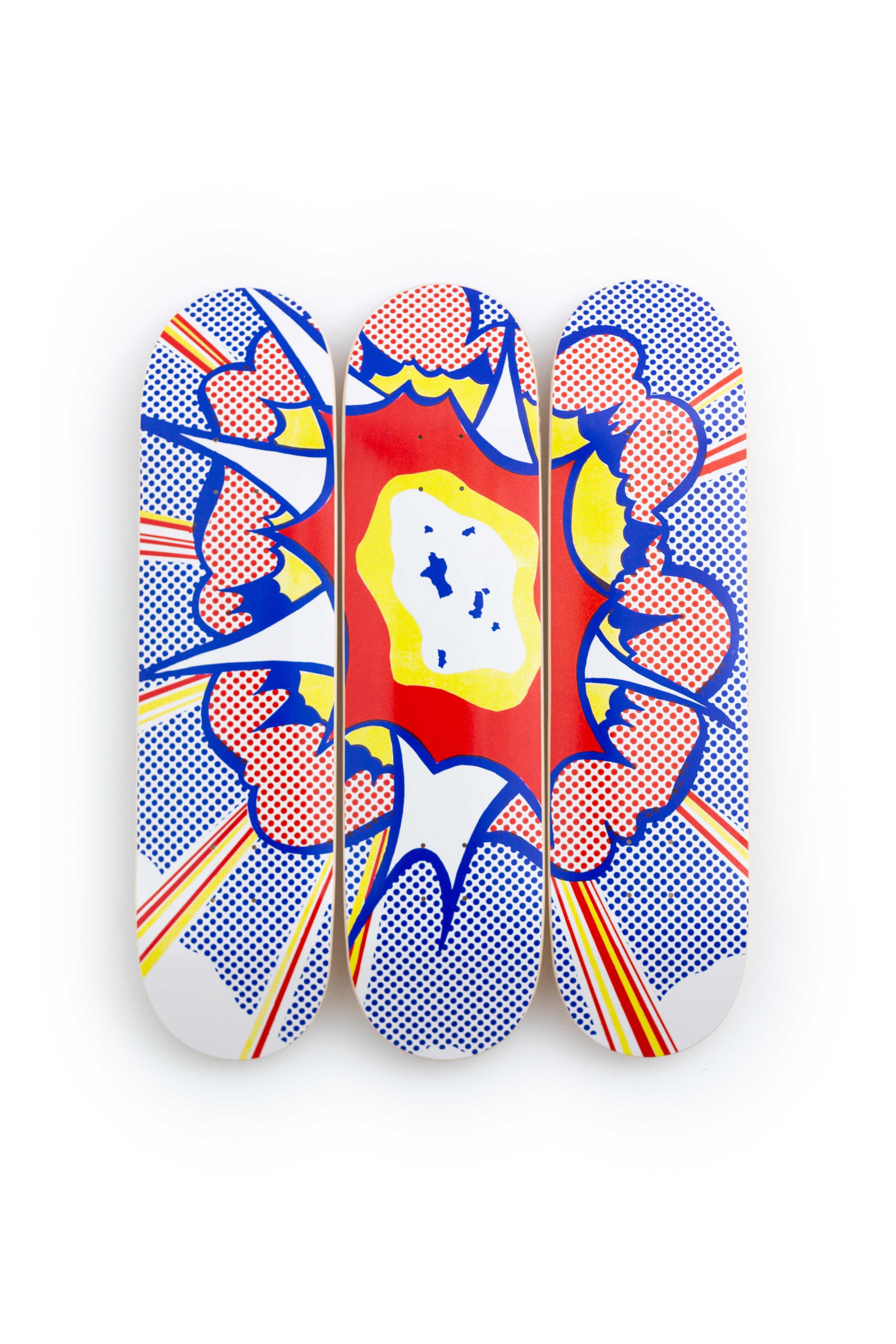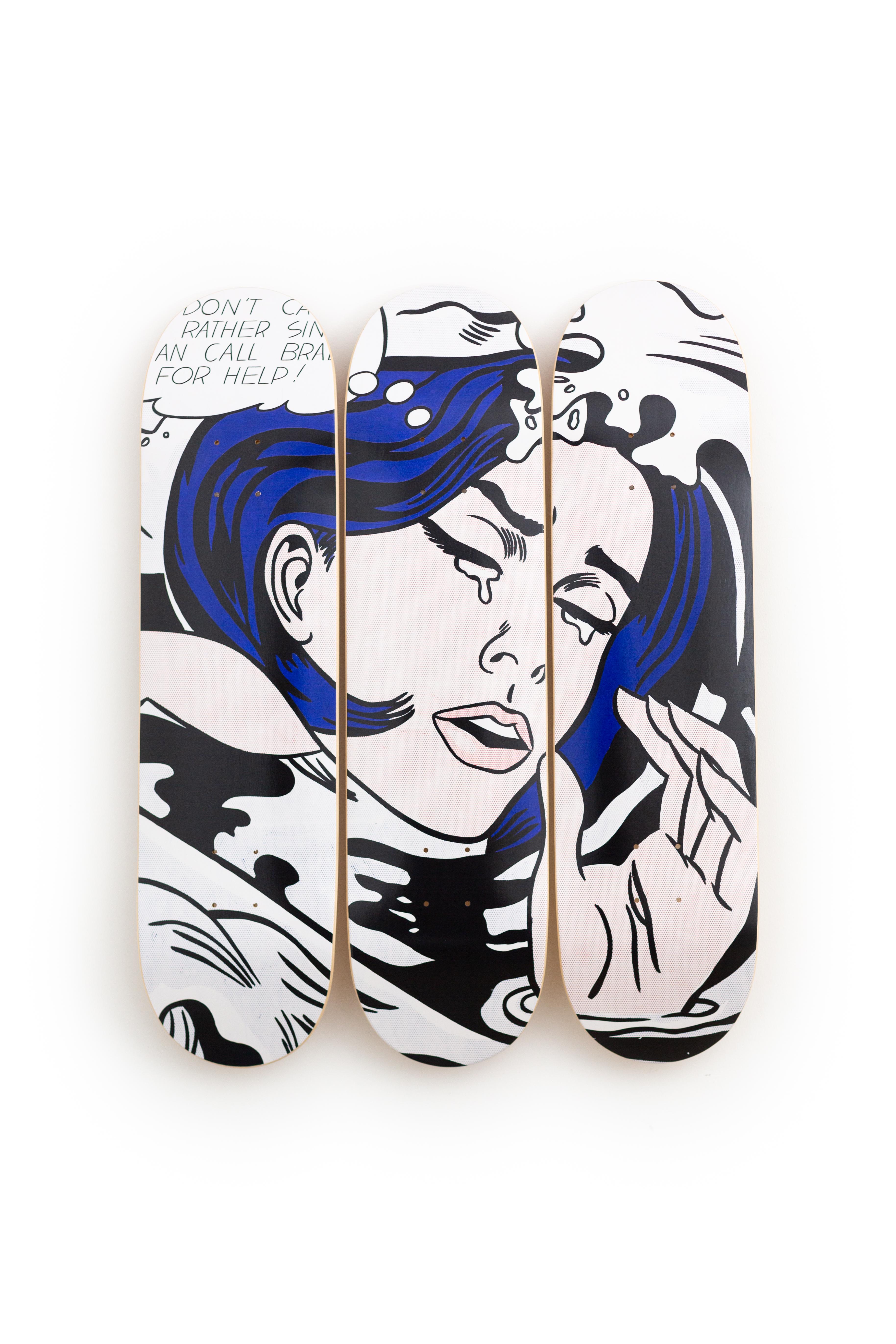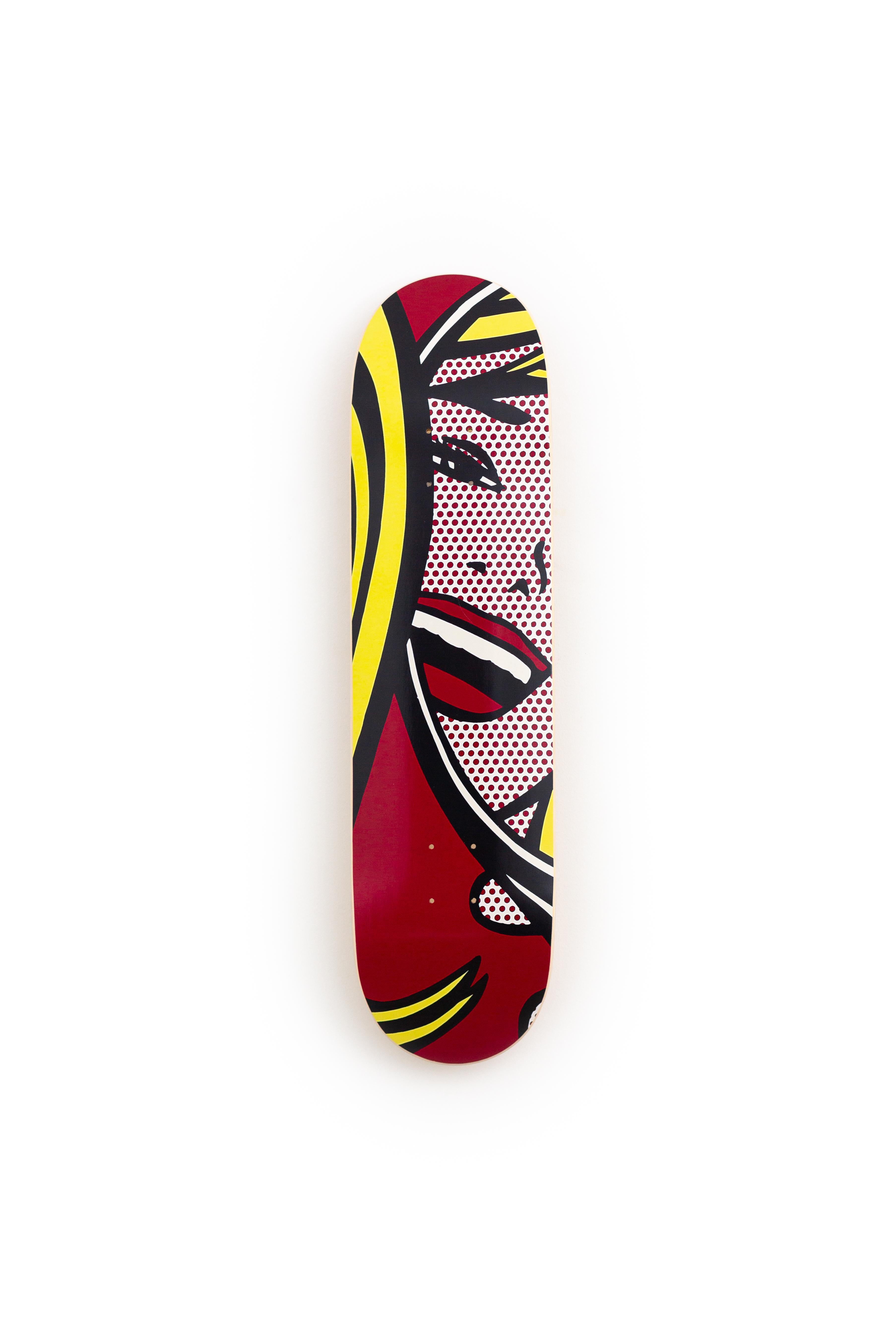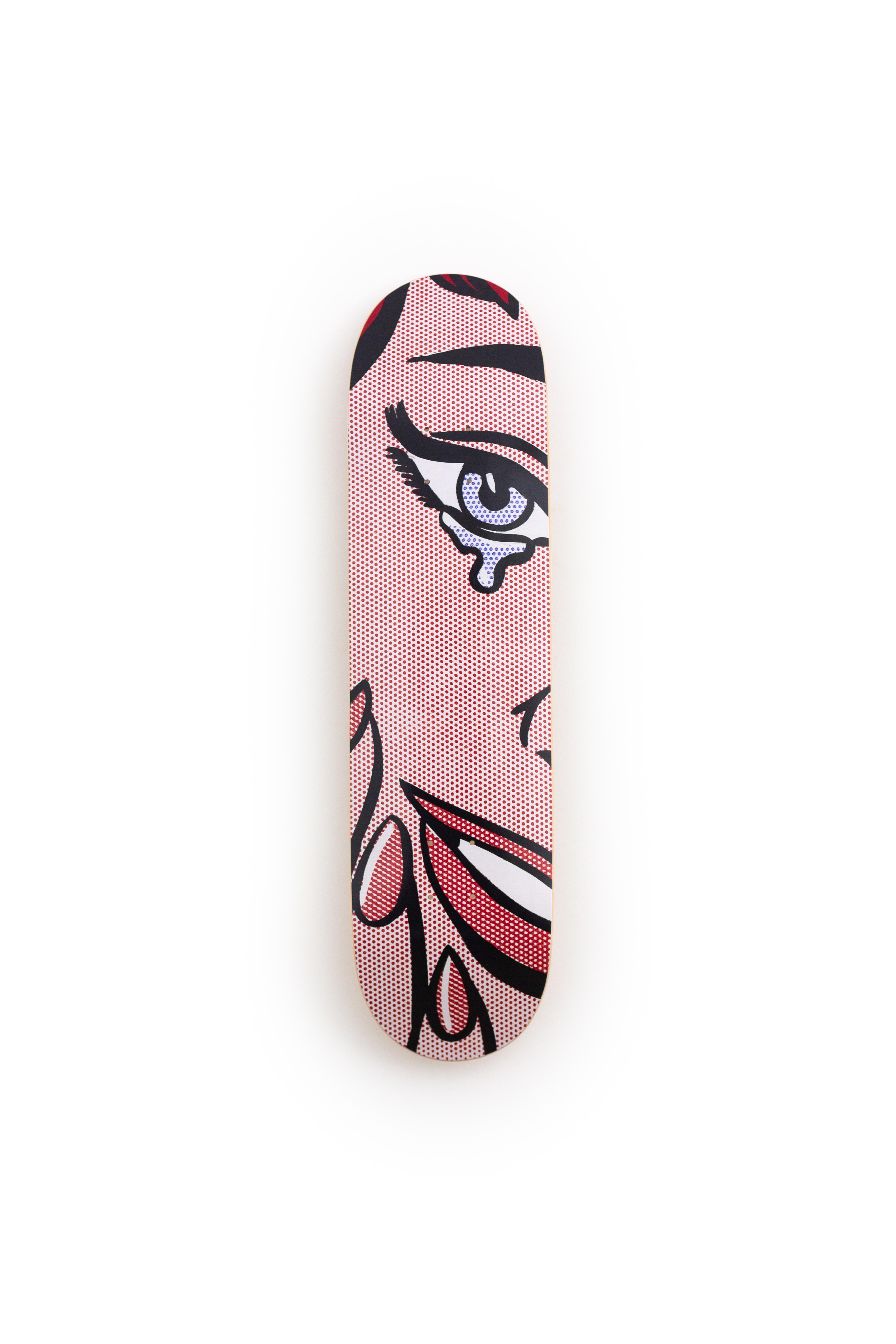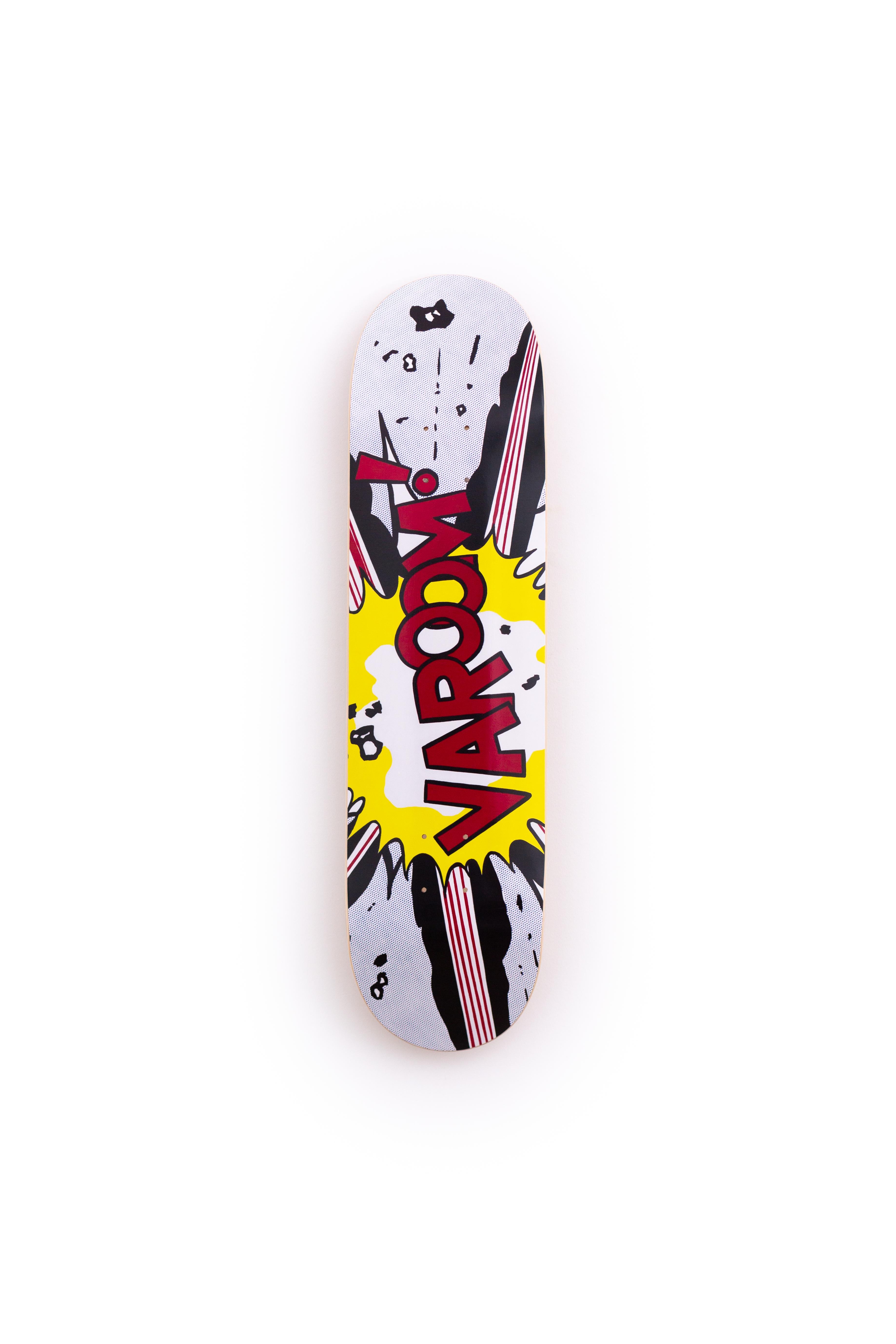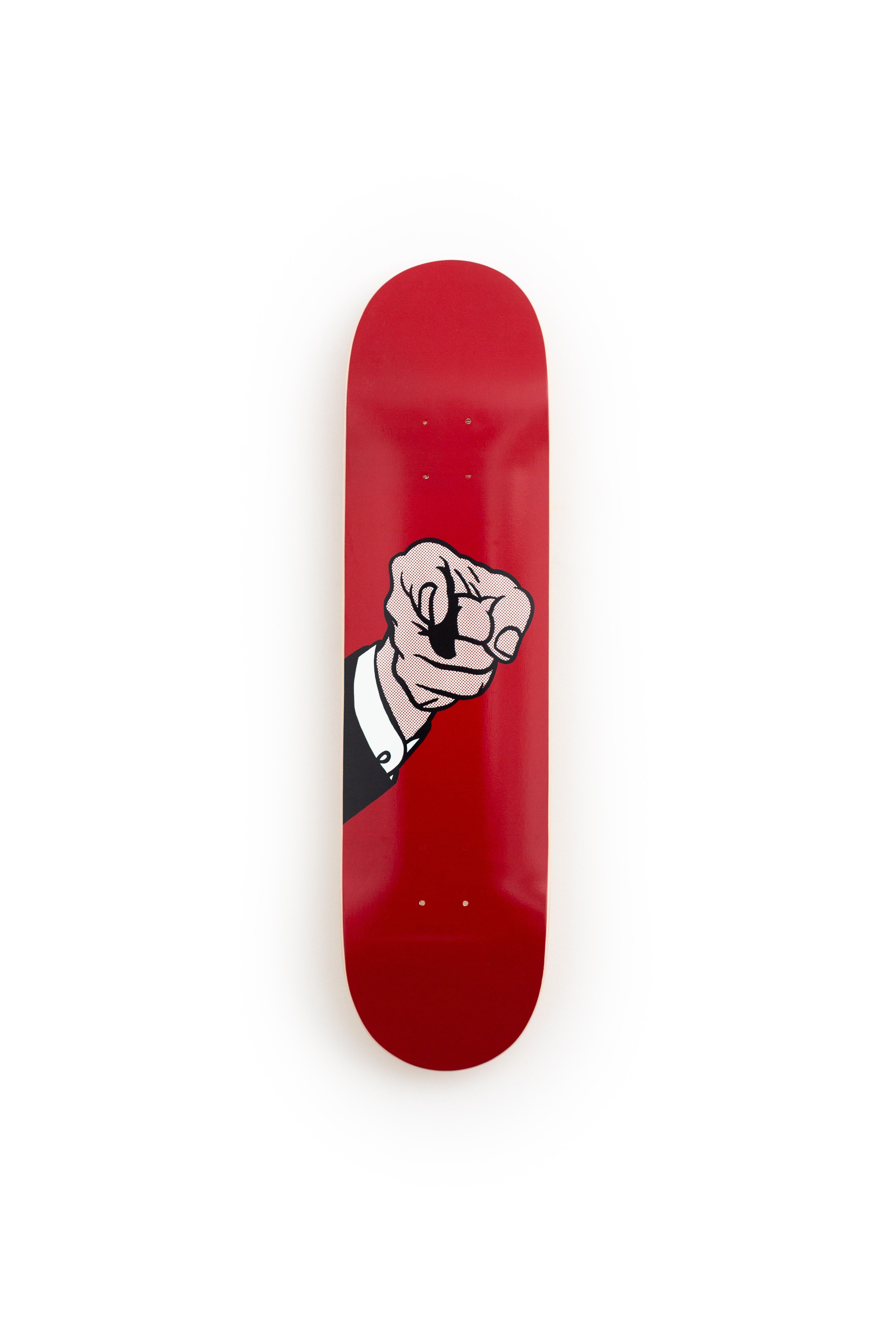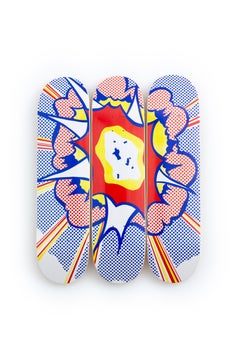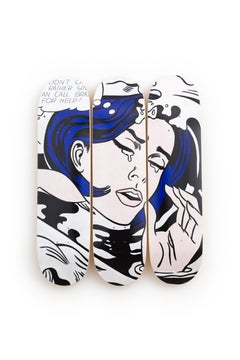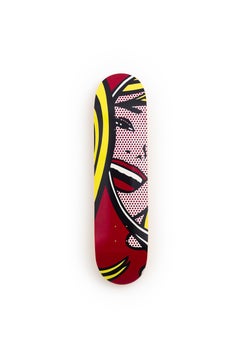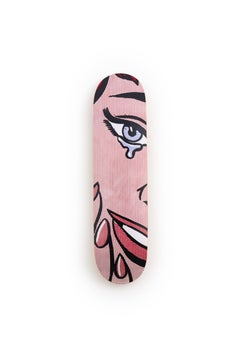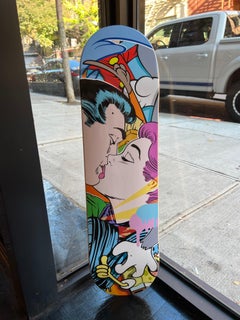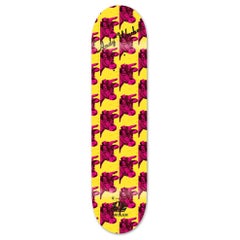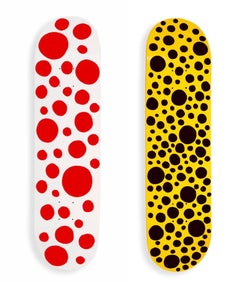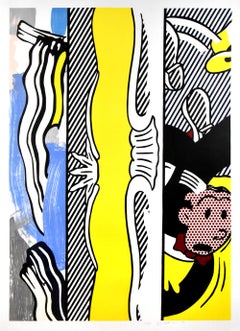Items Similar to ROY LICHTENSTEIN - KISS V Skate Decks Pop Art Design Modern
Want more images or videos?
Request additional images or videos from the seller
1 of 4
ROY LICHTENSTEIN - KISS V Skate Decks Pop Art Design Modern2024
2024
$1,016.51
£755.66
€850
CA$1,418.01
A$1,538.22
CHF 808.88
MX$18,716.99
NOK 10,112.30
SEK 9,537.15
DKK 6,473.27
About the Item
Roy Lichtenstein - Kiss V
Date of creation: 2024
Medium: Digital print on Canadian maple wood
Edition: Open
Size: 80 x 20 cm (each skate)
Condition: In mint conditions and never displayed
This triptych is formed by three skate decks made of 7 ply grade A Canadian maple wood.
© Estate of Roy Lichtenstein, 2024, all rights reserved
Kiss V (1964) by Roy Lichtenstein is a piece that explores emotions and relationships through his characteristic comic art style, but with an ironic and detached twist. This work belongs to the Kiss series, one of the most well-known within pop art, a movement in which Lichtenstein is a key figure. As in other of his works, in Kiss V the artist uses images taken from comics, but he doesn’t simply reproduce them; he transforms them, exaggerating certain visual and stylistic elements, making the image become something more than a graphic representation of a scene.
The painting shows two figures, a man and a woman, in a passionate embrace, their faces so close that their lips almost touch. However, what makes this scene unique and typical of Lichtenstein is the way it is presented. The visual style of Kiss V is marked by thick outline lines and flat colors, combined with the characteristic Ben-Day dots, a technique used in commercial printing to create shading and tones in images.
What’s fascinating about the piece is the way Lichtenstein plays with emotional exaggeration and artificiality. The kiss is depicted in a way that, instead of capturing the intensity or genuine intimacy of a romantic moment, it becomes a distant image, another piece of visual consumption within mass culture. The scene seems stripped of any real emotional nuance; it is exaggerated and mechanized, a metaphor for how human emotions can be consumed and replicated in cinema, comics, and advertising.
The work also reflects an implicit critique of the idealization of romantic relationships presented in popular media. The characters in the painting don’t seem to have a genuine emotional connection but are trapped in a superficial representation of love, as if it were just another image in a cultural production chain.
As for its impact, Kiss V is considered one of the most iconic examples of how Lichtenstein could take elements of popular culture and transform them into contemporary art, questioning the relationship between art and consumer culture. The work highlights how comics, a medium considered “low” compared to traditional arts, can be used to explore universal themes like love, desire, and emotionality, but from a critical and reflective perspective.
Kiss V is a high-impact piece that invites reflection on how emotions and relationships are represented, consumed, and recycled in contemporary visual culture. Lichtenstein, as in other works, not only celebrates these themes but also challenges them, inviting the viewer to question the authenticity of the media-driven emotions we consume.
ABOUT THE ARTIST
Roy Lichtenstein was born on October 27, 1923, in New York City, into a wealthy Jewish family. His father, Milton Lichtenstein, was a successful real estate broker, and his mother, Beatrice, was a homemaker with an interest in art. This comfortable environment, rich in cultural stimuli, allowed Roy to develop an early interest in drawing, jazz, and science fiction—interests that would permeate much of his later work.
He attended the Franklin School for Boys in Manhattan and later the Ohio State University, where he studied fine arts. His studies were interrupted by World War II, during which he served in the U.S. Army. Upon returning, he resumed his education and began teaching at various institutions, including Rutgers University, where he met Allan Kaprow, one of the precursors of performance art. This meeting helped shape Lichtenstein's thoughts on the boundaries of art.
In the early 1960s, Lichtenstein took a dramatic turn in his artistic direction. Tired of the dominance of Abstract Expressionism, which he saw as overly serious and emotionally saturated, he began experimenting with comic book imagery. His 1961 piece Look Mickey marked a watershed moment: it featured a recognizable cartoon image rendered with hand-painted Ben-Day dots, a technique used in commercial printing to create shading and color variation.
From this point on, Lichtenstein developed an unmistakable style characterized by bold outlines, flat colors, and the use of dots to mimic the appearance of printed comics. His work was both a celebration and a critique of mass media and consumer culture. Paintings like Whaam! (1963) and Drowning Girl (1963) are now icons of the Pop Art movement, juxtaposing melodrama with mechanical precision.
One of Lichtenstein's greatest contributions was his ability to transform banal, everyday imagery into works of high art, forcing viewers to confront the line between commercial and fine art. His work was not without controversy; critics accused him of plagiarizing comic artists, but Lichtenstein always defended his reinterpretations as transformative and conceptual.
Over the following decades, Lichtenstein expanded his scope, venturing into sculptures, murals, and reinterpretations of works by other artists, such as Picasso, Monet, and van Gogh. His Brushstrokes series (1965-1966) cleverly mimicked the gestural marks of Abstract Expressionism but rendered them in his mechanical style, parodying the very movement that once dominated the art world.
In the 1980s and 90s, Lichtenstein continued to innovate, creating large-scale public artworks and exploring themes like art deco, surrealism, and the history of painting itself. He also created pieces that commented on the artifice of perspective and the illusionism of space, always through his characteristic lens of irony and detachment.
Roy Lichtenstein passed away in 1997, but his legacy remains profound. His works are part of major collections around the world, from MoMA in New York to the Tate Modern in London. His influence can be seen in advertising, graphic design, and even digital culture, cementing him as one of the most important artists of the 20th century.
Through humor, clarity, and a touch of provocation, Lichtenstein redefined what art could be. He transformed the mundane into the monumental and taught generations to see the extraordinary within the ordinary.
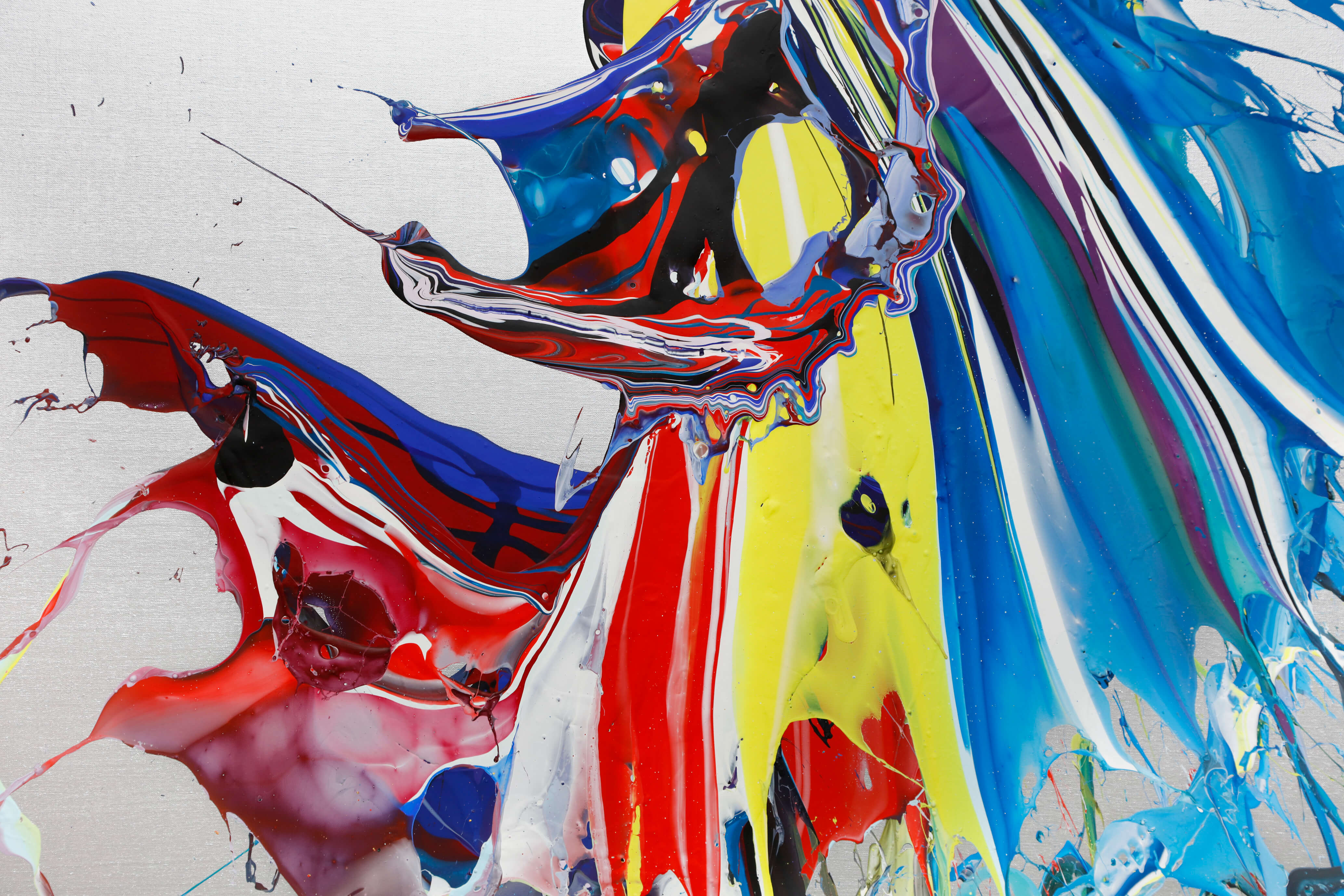
About the Seller
5.0
Gold Seller
Premium sellers maintaining a 4.3+ rating and 24-hour response times
Established in 2011
1stDibs seller since 2018
181 sales on 1stDibs
Typical response time: 13 hours
- ShippingRetrieving quote...Shipping from: Madrid, Spain
- Return Policy
Authenticity Guarantee
In the unlikely event there’s an issue with an item’s authenticity, contact us within 1 year for a full refund. DetailsMoney-Back Guarantee
If your item is not as described, is damaged in transit, or does not arrive, contact us within 7 days for a full refund. Details24-Hour Cancellation
You have a 24-hour grace period in which to reconsider your purchase, with no questions asked.Vetted Professional Sellers
Our world-class sellers must adhere to strict standards for service and quality, maintaining the integrity of our listings.Price-Match Guarantee
If you find that a seller listed the same item for a lower price elsewhere, we’ll match it.Trusted Global Delivery
Our best-in-class carrier network provides specialized shipping options worldwide, including custom delivery.More From This Seller
View AllROY LICHTENSTEIN - EXPLOSION, 1967. Skate Decks Pop Art Design Modern
By Roy Lichtenstein
Located in Madrid, Madrid
Roy Lichtenstein - Explosion, 1967
Date of creation: 2024
Medium: Digital print on Canadian maple wood
Edition: Open
Size: 80 x 20 cm (each skate)
Condition: In mint conditions and ...
Category
2010s Pop Art More Art
Materials
Wood, Digital
ROY LICHTENSTEIN - DROWNING GIRL, 1963 Skate Decks Pop Art Design
By Roy Lichtenstein
Located in Madrid, Madrid
Roy Lichtenstein - Drowning Girl, 1963
Date of creation: 2024
Medium: Digital print on Canadian maple wood
Edition: Open
Size: 80 x 20 cm (each skate)
Condition: In mint conditions ...
Category
2010s Pop Art More Art
Materials
Wood, Digital
after ROY LICHTENSTEIN - Girl in Mirror, c. 1964. Skate Deck Pop Art Design
By Roy Lichtenstein
Located in Madrid, Madrid
Roy Lichtenstein - Girl in Mirror, c. 1964
Date of creation: 2024
Medium: Digital print on Canadian maple wood
Edition: Open
Size: 80 x 20 cm
Condition: In mint conditions and never...
Category
2010s Pop Art More Art
Materials
Wood, Digital
after ROY LICHTENSTEIN - Happy Tears, 1964. Skate Deck Pop Art Design
By Roy Lichtenstein
Located in Madrid, Madrid
Roy Lichtenstein - Happy Tears, 1964
Date of creation: 2024
Medium: Digital print on Canadian maple wood
Edition: Open
Size: 80 x 20 cm
Condition: In mint conditions and never displ...
Category
2010s Pop Art More Art
Materials
Wood, Digital
after ROY LICHTENSTEIN - Varoom!, 1963. Skate Deck Pop Art Design
By Roy Lichtenstein
Located in Madrid, Madrid
Roy Lichtenstein - Varoom!, 1963
Date of creation: 2024
Medium: Digital print on Canadian maple wood
Edition: Open
Size: 80 x 20 cm
Condition: In mint conditions and never displayed...
Category
2010s Pop Art More Art
Materials
Wood, Digital
after ROY LICHTENSTEIN - Finger Pointing Skate Deck Pop Art Design
By Roy Lichtenstein
Located in Madrid, Madrid
Roy Lichtenstein - Finger Pointing
Date of creation: 2024
Medium: Digital print on Canadian maple wood
Edition: Open
Size: 80 x 20 cm
Condition: In mint conditions and never display...
Category
2010s Pop Art More Art
Materials
Wood, Digital
You May Also Like
street art artist Bustart "Skate Pop Love" Pop Art print on skatedeck
By Bustart
Located in New York, NY
Skatedeck print
In 1999 BustArt began his artistic career with classic Graffiti. Until 2005, he became familiar with the whole spectrum of Graffiti and reached a new level of identi...
Category
2010s Street Art Figurative Prints
Materials
Acrylic, Wood Panel
Andy Warhol Cow Skate Deck 2010
By (after) Andy Warhol
Located in NEW YORK, NY
Vintage Andy Warhol Cow Skateboard Deck:
This work originated circa 2010 as a result of the collaboration between Alien Workshop and the Andy Warhol Foundation. A brilliant piece of...
Category
1960s Pop Art More Art
Materials
Offset, Wood
Kusama Skateboard decks (Yayoi Kusama MoMa)
By Yayoi Kusama
Located in NEW YORK, NY
Yayoi Kusama MoMa Skateboard Decks (set of 2 works):
These Kusama skateboard decks feature Kusama's Dots Obsession imagery and make for standout Kusama wall art that hangs with ease...
Category
1960s Pop Art More Art
Materials
Wood, Offset
Two Paintings: Dagwood
By Roy Lichtenstein
Located in Palo Alto, CA
Roy Lichtenstein Two Paintings: Dagwood, 1984 is a vivid, colorful piece that demonstrates the clever work of Lichtenstein’s varied oeuvre. The work is c...
Category
1980s Pop Art Figurative Prints
Materials
Lithograph, Woodcut
Paul Insect I SEE Skateboard Deck Set Of 3 Beyond The Streets Signed XX/101 COA
By Paul Insect
Located in Draper, UT
Paul Insect:
Paul Insect is a UK contemporary artist. Best known for his collective named ‘insect’ that started in 1996 he is a collage, portrait master w...
Category
2010s Pop Art More Prints
Materials
Screen
Signed Daido Moriyama skate decks: set of 2 works ( Daido Moriyama photography)
By Daido Moriyama
Located in NEW YORK, NY
Hand-signed Daido Moriyama Skateboard decks: set of 2 individual works:
These works originated as a result of the collaboration between ...
Category
1970s Pop Art Sculptures
Materials
Wood, Lithograph, Offset
